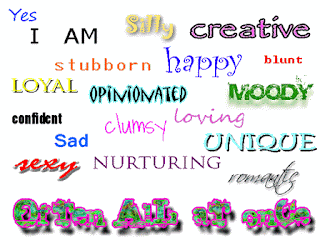As an early childhood educator
of adults, I am stereotyped a lot for my religion. At conferences or in the classroom, individuals
tell me that I do not look Jewish or talk Jewish. What does that mean? Is this something negative? What does it mean to look Jewish? Do students look at me differently when they
find out that I am Jewish? While my
religious beliefs are, in fact, Jewish, I am still the same person I was before
they knew I was Jewish.
Recently, I was
presented the Keynote address at a conference for Methodist early childhood
educators; it was a wonderful, rewarding experience. Until… one individual wanted to know if I had
converted. Converted to what? What did they mean? Then, she shared that although she loved my
Keynote presentation, she was surprised that they chose a Jewish individual to
present. My presentation was universal;
it had nothing at all to do with religion.
While the early childhood educators all worked at Methodist preschools,
they were early childhood professionals.
 Due to my
own passion for what I do, I have learned (and am still learning) to move
forward. I do not know how I feel about
being Jewish at this point, but my Judaism is a part of who I am as an
individual, a wife, a mother, an educator, a friend, and so much more. In my preschool (which was housed in a
synagogue), children of all religions were accepted and welcomed; it just
happened.
Due to my
own passion for what I do, I have learned (and am still learning) to move
forward. I do not know how I feel about
being Jewish at this point, but my Judaism is a part of who I am as an
individual, a wife, a mother, an educator, a friend, and so much more. In my preschool (which was housed in a
synagogue), children of all religions were accepted and welcomed; it just
happened. I do not think that children or families have been affected by my religion. At times, parents would question why we are accepting children of other religions into a Jewish preschool, and I was prepared to answer their questions. In reality, the school was housed in a Temple, but it was not a Jewish preschool. For the most part, families and most definitely young children accepted me for who I am.
 I guess the only ism that actually impacted my work with young
children was when I left the classroom to become a reading partner. In my initial school, I was surrounded by
African American or Haitian teachers. I
felt uncomfortable being White; I really did.
I tried to talk to teachers, but I felt like an outsider. I felt as if teachers resented my coming into
their school and working with their children.
They brushed me off, answering my questions with as few words as
possible. It might have been because I
was intruding on their territory… or perhaps because I was a reading specialist…
I do not know. For me, I felt it was because I
was White.
I guess the only ism that actually impacted my work with young
children was when I left the classroom to become a reading partner. In my initial school, I was surrounded by
African American or Haitian teachers. I
felt uncomfortable being White; I really did.
I tried to talk to teachers, but I felt like an outsider. I felt as if teachers resented my coming into
their school and working with their children.
They brushed me off, answering my questions with as few words as
possible. It might have been because I
was intruding on their territory… or perhaps because I was a reading specialist…
I do not know. For me, I felt it was because I
was White.Looking back to that year, I still, to this day, believe it was a form of racism. Now, I am another Head Start school where,again, my race is most definitely in the minority. But I knew many of these teachers from my workshops, and I was welcomed with open-arms. I adore these teachers; we value our similarities and differences. Through our interactions, we have shared our cultures. I have grown in leaps and bounds due to our interaction; it’s this type of learning that I hope is infused into every early childhood classroom.










